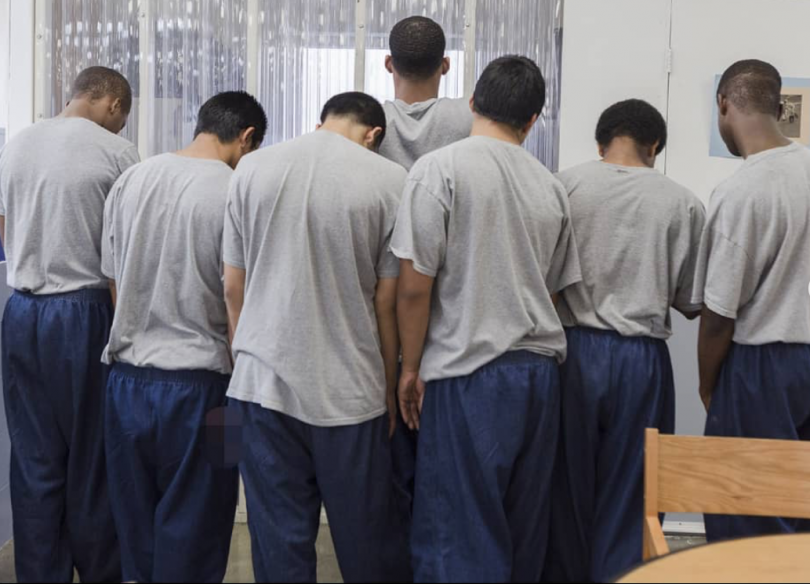L.A. County Using Arts to Paint New Picture of Juvenile Justice Reform
by Sara Tiano
As Los Angeles County leaders continue to reimagine the county’s juvenile justice system, they’re now looking to see if they can leverage the arts to help achieve reform goals.
With a $750,000 one-year grant from the Ford Foundation’s Arts Justice Fund (AJF), the county Arts Commission will launch the Arts and Youth Development Project, which is designed to serve youth and families involved — or at risk of involvement — with the juvenile justice system.
Citing statistics that suggest arts-based programming can reduce recidivism and improve future outcomes for incarcerated youth, the Board of Supervisors passed a motion yesterday directing a group of county agencies to collaborate with the Arts Commission to take stock of the arts programming currently available to probation-supervised youth and develop a strategy to increase access countywide.
“We know that every one of these young men and women have suffered trauma, and we also know that the arts are a potent tool for helping them express that experience and learn to move beyond it,” Supervisor Sheila Kuehl, co-author of the motion, said in a statement.
The Arts and Youth Development Project will create programming both for incarcerated youth and as part of pre-arrest diversion services. It will also focus on expanding access to arts communities in historically marginalized communities and for foster youth, who are overrepresented in the youth justice system.
This new development is in line with California’s trend in recent years toward a rehabilitative juvenile justice system rather than a punitive one. The state legislature has passed a number of bills curtailing juvenile incarceration and keeping youth out of adult facilities, and in L.A., the county has been increasingly investing in youth diversion and development projects.
In the motion, Kuehl and co-author Mark Ridley-Thomas cite research that says access to the arts improves the environment inside detention centers and is linked with fewer behavioral issues among participants and increased motivation to take advantage of educational programming.
Los Angeles County has provided arts programming in its juvenile camps and halls for years, but this new funding will allow for significant expansion of existing services. A number of other L.A. based community organizations, some of which already serve the county’s incarcerated and at-risk youth, were awarded AJF grants as well, including the Arts for incarcerated Youth Network, WriteGirl and the Actor’s Gang.
In a 2016 literature review, the federal Office of Juvenile Justice and Delinquency Prevention (OJJDP) found that “engaging in various arts activities (such as singing, dancing, play acting, and doing crafts) at a young age is associated with positive social and emotional behaviors, including empathy, sharing, and mood control.”
But it’s not a one-size-fits-all intervention. Interpersonal and collaborative forms of expression, like theater and performing arts helps to cultivate communication, teamwork and empathy, while solitary art forms like painting and creative writing can be helpful for self-reflection and mood control, according to the OJDDP review.
The OJJDP report highlighted a few model programs that exemplify the potential of arts programming in detention, like Reading for Life, a literature program that resulted in lower recidivism and fewer arrests.
“The program is based on the idea that literature can facilitate moral development by helping youths vicariously experience situations and stories presented in books, and relate the lessons they learn to experiences in their own lives,” the OJJDP report explains.
Research suggests that arts may be especially well-poised to address the particular needs of youth in the justice system, as many as 90 percent of whom have experienced trauma of some sort. Traumatic memories are stored in the nonverbal part of the brain, so they are more easily accessed through nonverbal therapies like art, according to Southern Illinois University researcher P. Gussie Klorer.
In addition to the healing qualities of art, the motion’s authors point to the career development potential for this programming. Nearly half the jobs in the creative economy don’t require a bachelor’s degree, according to a 2015 Arts Commission study.
“Given their accessibility for justice-involved individuals, these employment opportunities can be a beneficial part of a broader strategy for re-entry,” states the board motion, noting that unemployment is linked with higher chances of recidivism.
A cohort of county agencies led by the Arts Commission is directed to report back to the Board in 180 days with an inventory of the currently available arts programming and, building on the principals of the AJF grant, to come up with a “countywide plan for further elevating the arts as a criminal justice reform strategy” — including a scheme to develop county infrastructure to support its new arts programs.
In short, the supervisors see this AJF youth-centric grant as an opportunity to expand the overall arts investment for kids in the care of the county’s justice system, and have also requested the task force also provide recommendations to develop a similar arts programming strategies for adults in the justice system.
Sara Tiano, is a general assignment reporter for The Chronicle of Social Change, a national news outlet that covers issues affecting vulnerable children, youth and their families. Sign up for their newsletter or follow The Chronicle of Social Change on Facebook or Twitter. The story was produced in cooperation with WitnessLA.
The photo above shows youth at the culmination event for the writing program by @boldinkwriters at LA County Probation’s Camp Challenger, courtesy of Art for Incarcerated Youth Network, Instagram.

